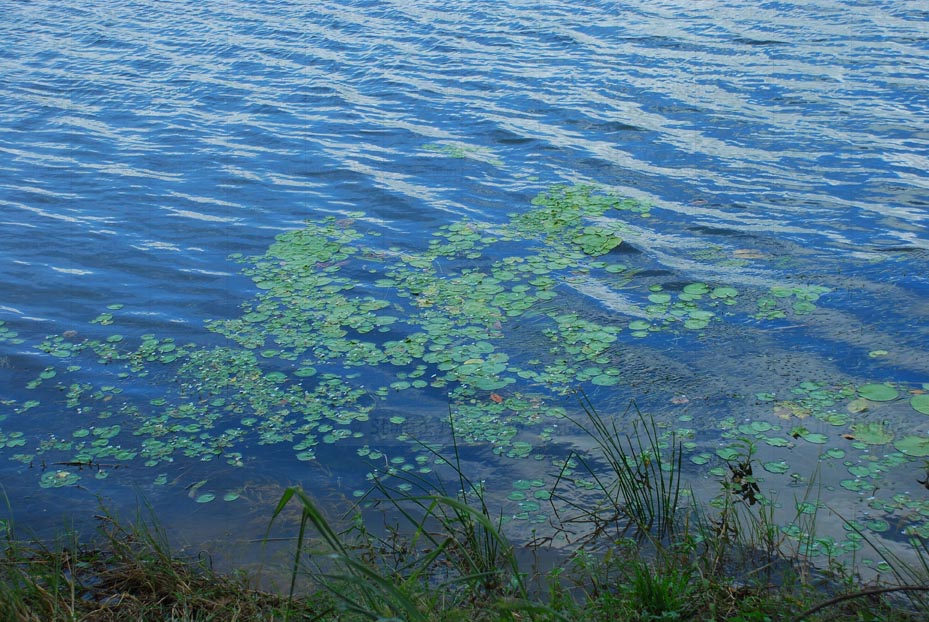 |
Home About Directory Conservation |
 |
Giant’s Tank Location: 90 0’ 0 N and 790 55’ 0 E to 80 45’ 0 N and 800 5’ 0 E; 995028 N and 380920 E to 967336 N and 399173 E; about 25 km southeast of Mannar in the Mannar District, of the Northern Province. Area: 2,500 ha Altitude: 40 m above mean sea level Overview: Giant’s tank is a large ancient irrigation tank situated in the northwestern semi-arid zone. It belongs to three AGA/DS divisions and feeds 162 minor tanks, 61 of which are in Manthai West. The tank irrigates about 11,000 ha of paddy land. At the end of the monsoon season, excess water is stored in a tank upstream (Tekkam Anicut) and used to irrigate an additional 2,500 ha. Giant’s tank directly benefits 2,560 farm families. It has also been identified as an IBA by BirdLife International. Physical features: Giant’s tank being located in the Mannar District in the semi-arid zone is characterised by high temperatures and low rainfall. The monthly temperatures range between 26.5°C and 30.0°C with highs normally recorded between May and August. Mannar receives nearly 60% of its rainfall during the northeast monsoon, which lasts from October through December. The land area is relatively flat and sits at low elevations. Ecological features: The aquatic macrophytic vegetation is dominated by species such as Nelumbo nucifera and Nymphaea stellata. The arid zone forests and dry scrubland are the major vegetation types that can be observed in the surrounding landscape. The large, shallow areas of the tank are ideal habitat for large colonies of aquatic birds particularly during the migratory season. A total of 124 species of birds have been recorded in and around Giant’s tank. This tank also regulates the downstream water flow to more than 100 other small tanks. Noteworthy fauna: Native fish harvested by local fishermen include Ompok bimaculatus, Puntius sarana, P. dorsalis and Heteropneustes fossilis. Aquatic reptiles include Lissemys punctata, Melanochelys trijuja and Crocodylus palustris. Giant’s tank, being a large storage tank, is an ideal habitat for aquatic birds such as Hydroprogne caspia, Chlidonias hybrida, Anhinga melanogaster, Fulica atra, Rostratula benghalensis, Ciconia episcopus, Ceryle rudis, Haliaeetus leucogaster and Ichthyophaga ichthyaetus. The elusive pheasant Francolinus pondicerianus has also been recorded in the tank vicinity. The noteworthy mammal species include Elephas maximus, Macaca sinica, Lutra lutra, Prionailurus viverrinus and Axis axis. Among the odonates, Brachythemis contaminata, Ischnura senegalensis and Orthetrum Sabina are common, while Pseudagrion decorum has also been recorded here recently. Noteworthy flora: Floating vegetation include Nelumbo nucifera and Nymphaea stellata. Land use: The tank supports a small-scale inland fishery while the surroundings are mainly used for irrigated agriculture and chena cultivation. Possible changes in land use: Allocation of more land for irrigated agriculture Hydrological and biophysical values: Giant’s tank is an important water storage tank in the Mannar District, which feeds 164 minor tanks in the downstream area. Social and cultural values: The inland fishery activities are an important livelihood for the local communities. Scientific research and monitoring: The waterbirds of this site are monitored by the CBC. Conservation education: Information not available Recreation and tourism: Giant’s tank is a popular destination for bird watchers but tourism has been seriously affected due to the uneasy security situation prevailing in these areas. Conservation measures taken: The catchment area and its surroundings have been protected as a Sanctuary by the DWC Conservation measures proposed: Information not available Disturbance and threats: Illegal logging occurs in the surroundings Land tenure: State owned Management authority and jurisdication: Irrigation Department References: BirdLife International (2005); de S Wijeyratne and Salgado (2003) http://www.manrecap.com/mannardistrict. html; Wijeyamohan et al. (2002); Wijeyamohan et al. (2006) |
| Maps |